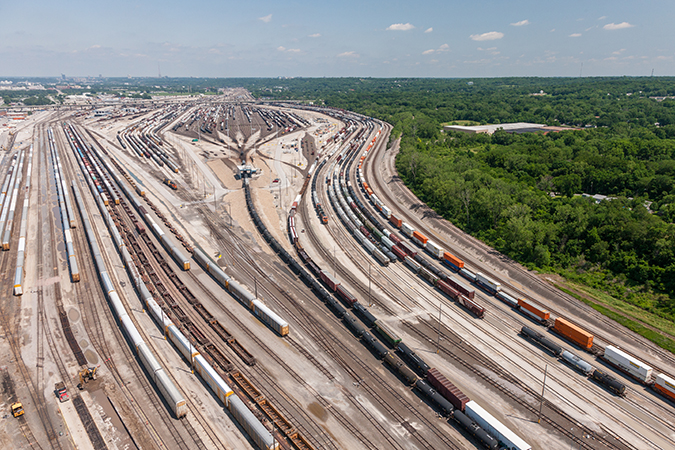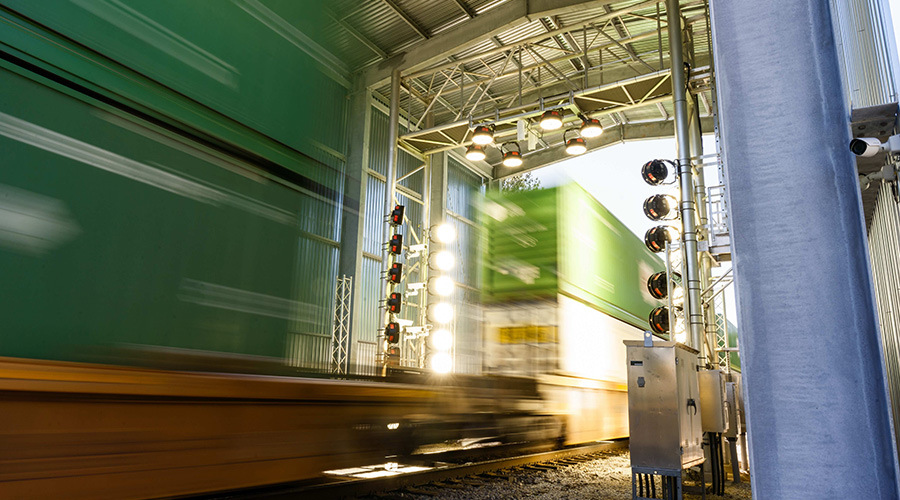BNSF continues to benefit from a high-tech, hump yard control system
11/17/2021
By Jeff Stagl, Managing Editor
In April, BNSF Railway Co.’s hump yard in Galesburg, Illinois, broke average-cars-per-day records for rail cars humped, pulled, arrived and departed in a month. The four new high-water marks for cars now stand at 1,888 humped, 1,923 pulled, 1,721 arrived and 1,847 departed.
One of the primary drivers for the record-setting performance is a terminal process control (TPC) system BNSF implemented at all eight of its hump yards several years ago. The technology was developed in-house through a collaborative effort involving the engineering, technology services, telecommunications and transportation departments.
TPC now is employed at yards in Galesburg; Barstow, California; Kansas City, Kansas; Lincoln, Nebraska; Memphis, Tennessee; Minneapolis; Pasco, Washington; and Tulsa, Oklahoma.
The system integrates specific hump yard details — such as each curve’s degree, the number of switches and percentage of grade incline or decline — to ensure more accurate calculations for sorting each rail car. Data from each hump is stored in a central repository and used to improve processes across BNSF’s entire system.
The achievement in Galesburg, and advances made at other hump yards, are due to the people closest to the work, BNSF officials said in an email. TPC has been successful because internal teams source feedback from experts on the front line, and then implement adjustments and enhancements, they believe.
 The Class I’s Argentine Yard in Kansas City, Kansas, is one of the nation’s largest classification yards. BNSF Railway Co.
The Class I’s Argentine Yard in Kansas City, Kansas, is one of the nation’s largest classification yards. BNSF Railway Co. “From the signal team on site to the yardmasters, switchmen and yard control employees, each workgroup is made up of professionals who care deeply about safely and efficiently classifying rail cars,” BNSF officials said. “It’s the ability of our internal TPC team to listen to the professionals who live and breathe the system day-in and day-out, ensuring all safety and efficiency gains are captured to achieve milestones.”
The multi-year, cross-departmental TPC implementation — which began in 2015 and concluded in 2018 — helped modernize the Class I’s hump yard network. The system represents a significant enhancement of data processing capabilities and car reclassification efficiency, and boosts safety by eliminating equipment touchpoints.
“[We have] benefitted from TPC by being fully in control of the system, which provides the ability to design and program functionality that exactly fits our needs,” BNSF officials said. “This control also allows us to enhance and update the system with our own employees to meet our needs on our timeline.”
 In 2017, BNSF spent $77 million to expand its Cherokee hump yard in Tulsa, Oklahoma. BNSF Railway Co.
In 2017, BNSF spent $77 million to expand its Cherokee hump yard in Tulsa, Oklahoma. BNSF Railway Co. The biggest advantage of TPC over the previous hump yard control system is the expertise gained from all the departments involved in the development and usage of the new technology, they said. The railroad previously relied on outside vendors to make hump yard system and equipment changes.
Now, BNSF’s TPC experts can use data output to customize transportation solutions that more efficiently fit customers’ needs. TPC is continually evaluated and enhanced as data is gathered and interpreted.
“The more rail cars that we process with the system, the more precise data we gather enabling us to tune the system for safety and efficiency gains,” BNSF officials said.
Similar to TPC, the Class I has designed and developed an in-house system tailored for flat yards and other key system areas.
The next steps for TPC? Refining new ways to enhance end-to-end decision making across the network to further reduce the time it takes a car to travel from origin to destination.

